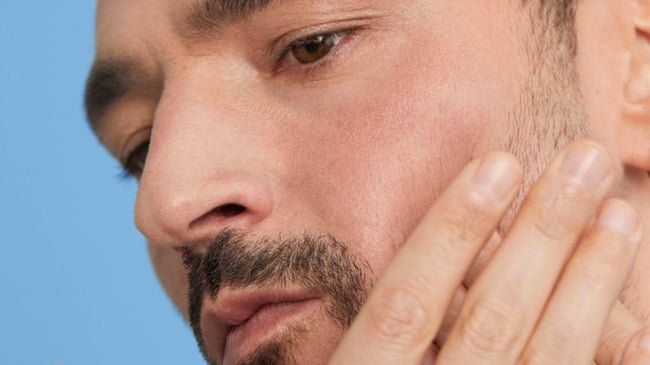

Atopic skin, explained
Photos Rachelle Simoneau
Words Floriane Reynaud
Share the article on
Atopic dermatitis is clearly a popular preoccupation, but what exactly is it? Tight skin, redness, impossible to find a soap that doesn’t make things worse... Read on for all the information you’ll need to recognise and treat atopic skin.
Atopic dermatitis: a modern condition
The dramatic increase in the number of people suffering from atopic dermatitis since the 1960s has led us to question our lifestyle. 20 to 30% of the French population is reportedly affected compared to only 5% 60 years ago. The main reasons behind this increase are overly aggressive washing products and the repeated wearing of synthetic clothes, among others. Year after year, these combined elements have made our immune system less effective and more prone to allergies. As our skin is our most exposed body part, it has become more fragile and has lost a large part of its natural skin barrier. The hydrolipidic layer (also known as the acid mantle), which is composed of natural oils (sebum), forms a defence against external aggressions. Should your skin lose this layer, it will tighten and redden. The idea isn’t to stop washing altogether, but rather to shower differently and to learn how to help the skin protect itself better.
How to recognise atopic dermatitis
If you have dry skin, don’t worry: it's not necessarily a symptom of atopic dermatitis, although you should moisturise more often. This skin condition is more invasive and often accompanied by highly visible eczema outbreaks. If your skin is itchy when you get out of the shower and a simple body lotion isn't enough to soothe the irritated dry skin, you may have atopic dermatitis. Another symptom is the appearance of red, itchy patches on certain parts of the body. Eczema is the most extreme phase of atopic dermatitis and must be treated medically.
How to prevent atopic dermatitis
If you find that your skin is becoming increasingly dry, there is still time to correct the bad habits that can lead to chronic skin disease. Here is a list of things you can do:
1. Gentle washing: wash once a day with a superfatted product to cleanse mucous membranes and high perspiration areas without overusing hot water.
2. Moisturise: the only way to restore a skin barrier when the skin does not produce it itself is to apply it manually. Invest in a moisturiser and emollient balm that's higher quality than a simple body lotion to soothe your itchy patches.
3. Lower the temperature: overheating your flat causes moisture to evaporate from the air and from the skin. Put on a jumper instead!
4. Drink enough: drinking too little water prevents cells from functioning properly and renewing themselves. Drink at least 1.5L per day; more if you exercise.
5. Choose natural fibres: wearing synthetic and close-fitting clothing every day can lead to skin irritation. For clothing worn close to the body choose cotton, linen, silk and other natural materials instead.
6. Cut down on smoking: it's best to quit completely, you’ll be doing your body, and therefore your skin, a lot of good!
7. Eat good fats: repair your skin's hydrolipidic layer and give it many other good things by putting Omega-3s – found in fatty fish, nuts and rapeseed oil – on your plate.
The main reason atopic dermatitis is so widespread is that we have collectively neglected our skin for too long. Our last piece of advice is as follows: be gentle on your body’s skin as well as your face’s skin. Although your body’s skin is very resilient, it only takes a slightly too aggressive change to disrupt the human body’s largest organ in its entirety.